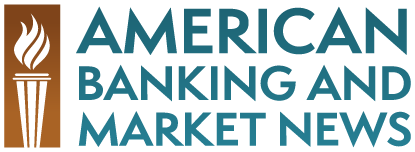 The recent rises in US interest rates are widely interpreted as a signal that the economy is normalising after the financial crisis of 2008. The US Federal Reserve last raised rates in June, making three hikes since Q2 2016. However these rises have been an unwelcome development for some US regional banks and financial companies.
The recent rises in US interest rates are widely interpreted as a signal that the economy is normalising after the financial crisis of 2008. The US Federal Reserve last raised rates in June, making three hikes since Q2 2016. However these rises have been an unwelcome development for some US regional banks and financial companies.
Capital One Financial, based in McLean, Virginia, has announced that it is withdrawing from new home equity and mortgage loans. This means the loss of some 1,000 jobs at the lender. The reason given is that the rises in interest rates have discouraged new borrowers. Capital One intends to keep managing its current portfolio of home loans and to weigh up its options when it comes to the ongoing servicing of home loans.
Difficult to stay competitive yet make a profit
This is not the only lender struggling to grow its loan book as interest rates begin to move upwards. Last month, KeyCorp, based in Cleveland, issued a statement that cut back its 2017 forecast for lending. This was following a disappointing third quarter profit statement.
Larger banks borrowing more to fund mortgages
Elsewhere, the Office of Financial Research reported that larger US banks have borrowed twice as much in the past decade, from the Federal Home Loan Bank System (FHLB). This appears to be the result of tighter rules that were imposed as a result of the credit crisis.
The FHLB provides funds to the mortgage business by lending to its member banks, insurers and credit unions, calling these loans “advances”. There are 11 regional FHLB banks in the US that run the system. The FHLB has currently advanced as loans, about 65% of its assets – a total of $706bn. 30% of this lending is to larger banks – those with assets of more than $250bn. This is a different picture from the one that obtained a decade ago, when advances to these large banks accounted for only 14% of the lending.
In fact nearly a quarter of the FHLB’s loans currently outstanding are to just three huge US banks: Wells Fargo, Citigroup and JP Morgan Chase. The FHLB has increased the amount of short term debt it issues, in order to pay for these “advances” which have somewhat longer maturity dates.
It’s a funding model that has led to some comment because it makes the FHLB less able to withstand “runs”, however low the probability of such an event currently is. The FHLB is regulated by the same agency that regulates Freddie Mac and Fannie Mae – the Federal Housing Finance Agency. And the agency has apparently asked the FHLB to reduce its dependence on short term funding.
The market is now dominated by non-bank lenders
It’s noteworthy that in 2011, half of all new mortgage loans came from the three largest US banks: Wells Fargo, Bank of America and JP Morgan Chase. But by 2016 that had fallen to a little over a fifth of total lending.
Commentators have pointed to various reasons – one is that instead of being able to run their own risk management regimes, after the financial crisis, banks found the regulatory regime much more demanding. There’s a cost to introducing new layers of compliance, and there’s always a risk that mistakes can be made, with consequent negative publicity. So many large banks simply pulled back because the profits to be made didn’t sufficiently offset the risks inherent in the mortgage business.
Will interest rates keep rising?
Those who use spread betting firms, such as CMC Markets, to back their judgement on the direction of interest rates, are already taking out positions on whether the Fed will raise interest rates again in December. There seems to be widespread expectation that rates are going to be rising again.
While US banks and non-bank lenders are plainly prepared for further rises, it remains to be seen how well householders will withstand the economic shock, and how mortgage lending will be affected.

